

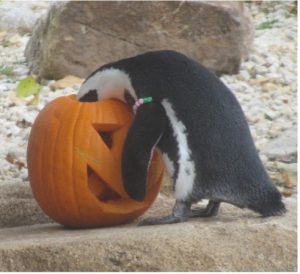 A slight chill blows in the air, and soon the smell of pumpkin spice follows right behind it. Once we start sipping our pumpkin spice lattes, we usually start dreaming about how we want to carve or decorate this year’s pumpkin to proudly display on our front porch. But did you know that carving and decorating pumpkins every year contributes to millions of pumpkins worldwide being added to landfills? When our jack-o-lanterns stop looking like jack-o-lanterns, our first instinct is to just throw them in the trash, but this adds to landfill waste and actually causes more methane production, which is a greenhouse gas 20 times more damaging than carbon dioxide.
A slight chill blows in the air, and soon the smell of pumpkin spice follows right behind it. Once we start sipping our pumpkin spice lattes, we usually start dreaming about how we want to carve or decorate this year’s pumpkin to proudly display on our front porch. But did you know that carving and decorating pumpkins every year contributes to millions of pumpkins worldwide being added to landfills? When our jack-o-lanterns stop looking like jack-o-lanterns, our first instinct is to just throw them in the trash, but this adds to landfill waste and actually causes more methane production, which is a greenhouse gas 20 times more damaging than carbon dioxide.
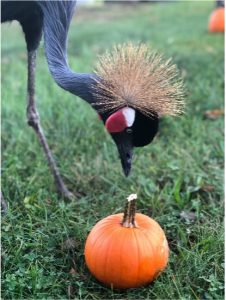 There is good news, however! There are still ways to have your pumpkin carving party but to make it a zero-waste activity. The first step is finding the perfect pumpkin. The best way to help reduce your carbon footprint here is by purchasing from local farmers or even by growing pumpkins in your very own backyard. Buying local produce means that it hasn’t travelled thousands of miles to get to you and thus hasn’t used as many fossil fuels. Local farmers are also more likely to grow organic products and not use as many pesticides. Plus it can be a lot of fun! Many local pumpkin patches now have family-friendly activities like hay rides or corn mazes. They often also sell delicious, homemade treats like apple cider doughnuts and pumpkin pie. So be sure to check out what kinds of pumpkin patches are in your area!
There is good news, however! There are still ways to have your pumpkin carving party but to make it a zero-waste activity. The first step is finding the perfect pumpkin. The best way to help reduce your carbon footprint here is by purchasing from local farmers or even by growing pumpkins in your very own backyard. Buying local produce means that it hasn’t travelled thousands of miles to get to you and thus hasn’t used as many fossil fuels. Local farmers are also more likely to grow organic products and not use as many pesticides. Plus it can be a lot of fun! Many local pumpkin patches now have family-friendly activities like hay rides or corn mazes. They often also sell delicious, homemade treats like apple cider doughnuts and pumpkin pie. So be sure to check out what kinds of pumpkin patches are in your area!
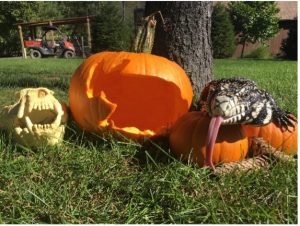 The next step is deciding if you want to carve or decorate. If you choose to decorate your pumpkin, be crafty and use decorations that can be removed. Decorations, including paint, cannot be put in compost bins (we’ll talk more about this in just a moment), so make sure everything can be removed when you want to dispose of your pumpkin. If carving is the way you want to go, save the parts you might normally throw away, like the seeds, guts, and any parts you cut out. Why should we save these, do you ask? Because you can eat them! You can make a wide variety of sweet or savory treats, including roasted pumpkin seeds, pumpkin puree (which leads to an incredible amount of options), and even pumpkin soup!
The next step is deciding if you want to carve or decorate. If you choose to decorate your pumpkin, be crafty and use decorations that can be removed. Decorations, including paint, cannot be put in compost bins (we’ll talk more about this in just a moment), so make sure everything can be removed when you want to dispose of your pumpkin. If carving is the way you want to go, save the parts you might normally throw away, like the seeds, guts, and any parts you cut out. Why should we save these, do you ask? Because you can eat them! You can make a wide variety of sweet or savory treats, including roasted pumpkin seeds, pumpkin puree (which leads to an incredible amount of options), and even pumpkin soup!
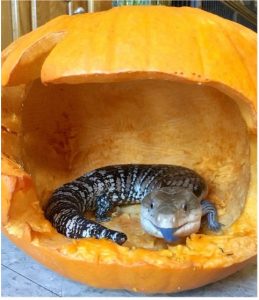 Whether you carve a masterpiece or decorate an incredible showpiece, eventually your pumpkin is going to start to look a little less than ideal. So what do you do with it now? About 30% of our trash is food scraps and yard waste. So instead of throwing it in the trash, try composting! If you love to garden, adding compost to your soil can actually help make your soil more nutritional for plants and can even help improve water quality. Even if you live in an apartment, there are easy ways to compost at home. If you can’t make a compost pile outside, you can purchase a small compost bin to keep indoors. Check out this website to learn more about composting and for tips and tricks to help you become a pro in no time: https://www.lvsustainabilitynetwork.org/compost/. Are you not really into gardening? Not to worry! You can always donate your scraps or compost to local farmers or community gardens. Check your area to see who might be interested in your scraps!
Whether you carve a masterpiece or decorate an incredible showpiece, eventually your pumpkin is going to start to look a little less than ideal. So what do you do with it now? About 30% of our trash is food scraps and yard waste. So instead of throwing it in the trash, try composting! If you love to garden, adding compost to your soil can actually help make your soil more nutritional for plants and can even help improve water quality. Even if you live in an apartment, there are easy ways to compost at home. If you can’t make a compost pile outside, you can purchase a small compost bin to keep indoors. Check out this website to learn more about composting and for tips and tricks to help you become a pro in no time: https://www.lvsustainabilitynetwork.org/compost/. Are you not really into gardening? Not to worry! You can always donate your scraps or compost to local farmers or community gardens. Check your area to see who might be interested in your scraps!
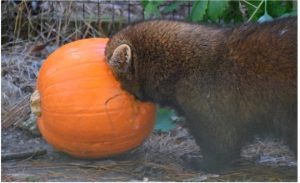 Don’t get your head stuck in a pumpkin this season over how to make the most of your pumpkin carving traditions this year. As you can see, there are many different, simple ways you can help make this pumpkin carving season a little greener (and a little tastier). Now get those carving tools ready, pick out your pumpkin, and be sure to stop by the Lehigh Valley Zoo if you’re looking for some carving inspiration!
Don’t get your head stuck in a pumpkin this season over how to make the most of your pumpkin carving traditions this year. As you can see, there are many different, simple ways you can help make this pumpkin carving season a little greener (and a little tastier). Now get those carving tools ready, pick out your pumpkin, and be sure to stop by the Lehigh Valley Zoo if you’re looking for some carving inspiration!
Written by Tara Mlodzienski
Education Specialist
Lehigh Valley Zoo | Schnecksville, PA
Sources: